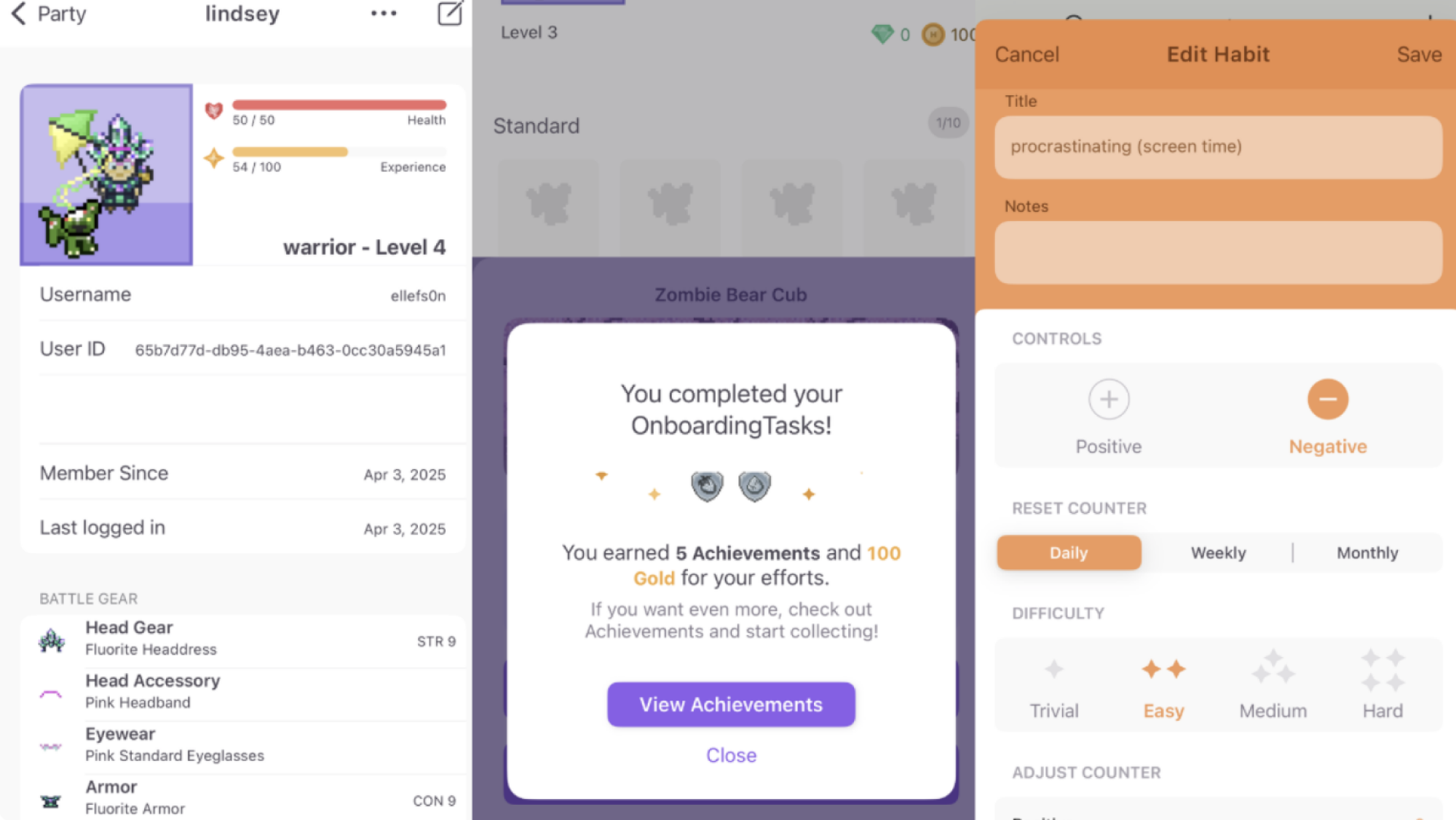We may earn a commission from links on this page.
Call me immature, but I’m about a thousand times more likely to participate in activities that are good for me when they can be gamified. Even the simple pleasures of watching a number go up or earning a digital milestone badge can motivate me to get to the gym, track my meals, or form a new habit. Gamification can be used for focusing and studying, too, and a wide variety of apps exist to serve this purpose. Here are some of the best.
Gamification apps for focusing
Focusing is notoriously difficult, especially in this hyper-connected era in which many of us can’t go five minutes without getting a text or eat a meal without watching TikTok videos. Use your device to your advantage instead with these apps that turn focusing into a game.
Finch
Finch is my favorite habit tracking app and I use it every day (streak as of today: 311!). You are responsible for the well-being of a happy little bird character and you take care of them by marking off your to-dos. I will be upfront and say it’s a little infantilizing and mushy; it comes pre-loaded with to-dos like “get out of bed” and “take a stretch break.” I left those in alongside the actual daily activities I programmed in myself for some easy wins, but the app is clearly designed for people struggling a little with executive function.
To me, though, Finch is great because it’s so positive. Other apps might penalize you for missing a day, but this one is encouraging. It’s useful to have a little positive reinforcement every day, even if it’s a little cloying. By completing your tasks, you send your bird on “adventures,” earn in-game currency to dress them up in outfits, and level up your friendship score with them. Interestingly, you are also periodically prompted to enter in how you’re feeling and what’s making you feel that way, which the app tracks. Over time, you can see a data breakdown of your moods and the things that affect them, which is useful if you’re trying to maximize your productivity and make a few lifestyle changes to enhance it.
Read my full review of the Finch app here.
Habitica
One of the gold-standard apps in gamification and productivity is Habitica, which is almost like a roleplaying game. You designate the goal you want to achieve, track when you do it, and watch as your in-game avatar gains (or loses) health. Your avatar can even link up with other players for games and challenges, so you all level up together. You earn gold coins that can be spent in-game or “redeemed” when you do something you want to do in real life, like watch a movie. It’s free, but you can make in-app purchases or subscribe to group plans that help coordinate team goals for $9 per month, plus $3 per person.
Read my full review of the app here.
Toggl
Another app that’s great for teams but also works well for personal productivity, Toggl is a time-tracker that gives you leaderboards in addition to achievements when you stay focused and get things done. If digital badges don’t get you going, imagine the rush of seeing your name at the top of a leaderboard. If you’re using it on your own, it’s free, but after a 14-day trial, teams will pay $9 per user per month.
It looks like any digital calendar tool (and you can import calendars, like Google Calendar, right into it so you can see all your daily commitments), but there’s a Play button in the top right corner that you tap when you’re ready to track time. You can label the time blocks (and should get familiar with the concepts of time blocking and time boxing to make this most effective) so you can see precisely how many minutes you’re devoting to a given task every day.
Beeminder
Beeminder is a great app because it links up to a variety of other apps—Habitca, Toggl, Duolingo, Gmail, Fitbit, Strava, and more—pulling in your data to make sure you’re staying on track with your goals. If you have a goal to stay focused on Slack or emails, Beeminder can actually make sure you’re doing it instead of relying on you to be honest in self-reporting. Continue to do what you’re trying to do and a red line will appear, inching toward your goal. The catch? If you don’t stick to what you’re trying to focus on, it charges $5 to the card you have on file. Otherwise, it’s free for up to three goals, but you can unlock unlimited goals (and the ability to put off payments and set charge caps) with premium plans that move from $8 per month, $16 per month, or even $50 per month, depending on how many features you want.
If you’re worried about the money-losing aspect, don’t be: This isn’t a tyrannical, scammy app. The developers are clear that if something comes up and prevents you from completing a goal on time, you can respond to the email you received about that goal’s timeline starting, ask for a refund, and they’ll “always believe you” and reverse the charge.
Gamification apps for studying
If you need to gamify your studies, there are special apps that work well for that, too. The software above also works for studying, so if you’re more of a Habitica person, feel free to stick with those. The ones below have unique features that might be helpful for students.
FocusPomo
This is my favorite Pomodoro technique app. FocusPomo is simple to use and allows you to quickly access “focus sessions,” which are periods of time that are blocked out for studying or working. The app blocks your other, more distracting apps and rewards you with a little tomato graphic whenever you finish a session. It might not seem like much, but just collecting tiny, pixelated tomatoes becomes a little addicting. The app syncs with your calendars and communication platforms to make it easier for you to launch focus sessions whenever you have something to do, too, so earning those little tomatoes is surprisingly easy.
Read my full review of FocusPomo here.
Flora
If you want something a little zen that still motivates you, try Flora, which is an app that just wants to help you plant trees (and stay focused on your work). It gamifies your productivity by rewarding you with cool animations, similar to the others on this list. Here, you get to you grow “trees” in a virtual forest, but only so long as you don’t interrupt their growth by using your phone when you’re supposed to be working. Moreover, you can bet money on your ability to carry out focus sessions or buy a subscription, both of which directly fund the planting of trees in the real world. That’s not a gamification so much as a real-world contribution that can make you feel good about your studying.
Read my full review of Flora here.
Study Bunny
Study Bunny is a game designed for students. It has an in-app timer and a scored flashcard system, slots for to-do lists, and room for 15 subjects. You are assigned a virtual bunny rabbit that gets happier when you track work and progress, but sadder when you pause a work session or don’t open the app. The longer you work, the more coins you earn to buy items for your bunny. The app is pretty janky and I won’t lie about that, but it’s cute and stress-free, which makes it ideal if you’re looking for a fun way to stay motivated about your studies.
Read my full review of Study Bunny here.

















